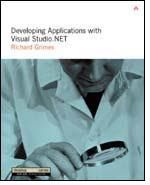Top XML reference May 2002
Table of Contents
The Microsoft DOM
XPath Reference
A few examples of XPath expressions
Worked code samples
Example: Combining and intersecting two nodesets
Example: Creating a summary of author sales for a publisher
Example: Creating an HTML document with 'previous' and 'next' links
Example: Creating listboxes and checkboxes using parameters
Example: Creating listboxes and checkboxes using variables
Example: Generating a new stylesheet
Example: Numbering paragraphs and chapters
Example: Using different axes
Example: Whitespace preserving and stripping




